20+ SAMPLE Policy Brief
-
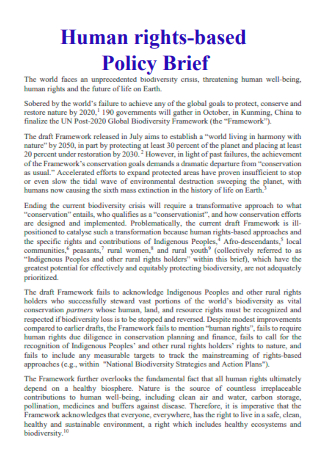
Human Rights-Based Policy Brief
download now -

Trade and Development Policy Brief
download now -
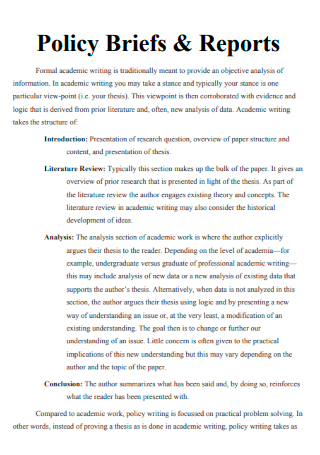
Policy Briefs & Reports
download now -
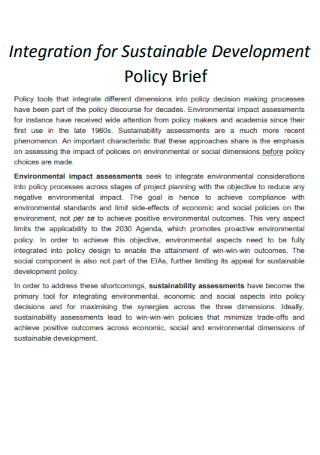
Integration for Sustainable Development Policy Brief
download now -
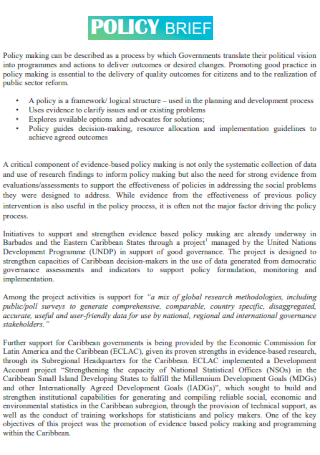
Sample Policy Brief
download now -
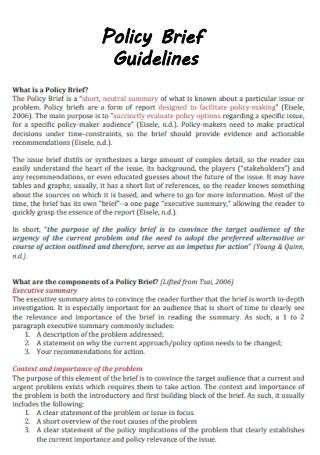
Policy Brief Guidelines
download now -
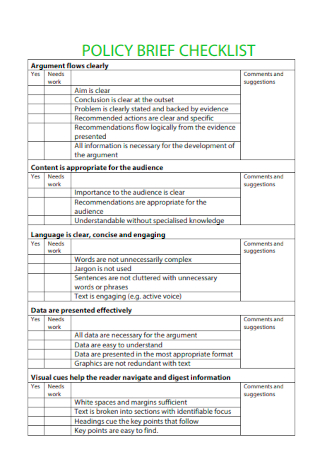
Policy Brief Checklist
download now -

Basic Policy Brief
download now -
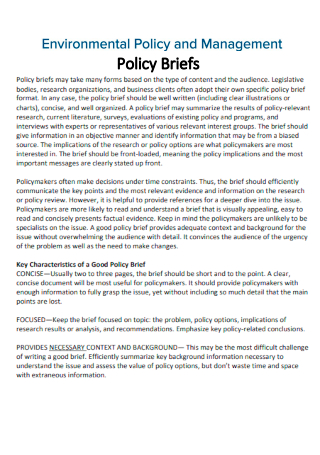
Environmental Policy and Management Policy Brief
download now -
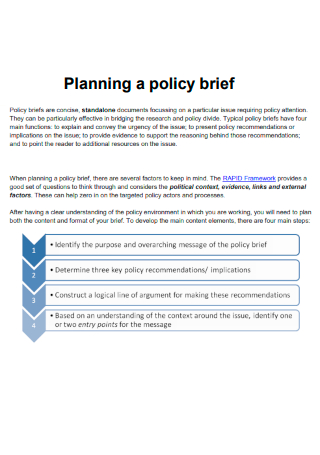
Planning a Policy Brief
download now -
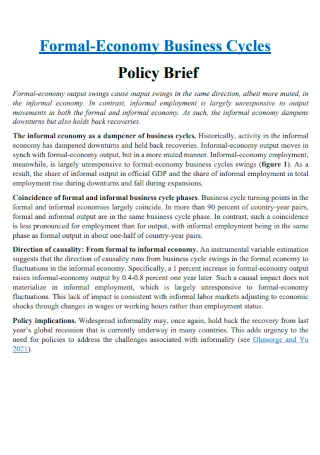
Economy Business Cycles Policy Brief
download now -

Formal Policy Brief
download now -
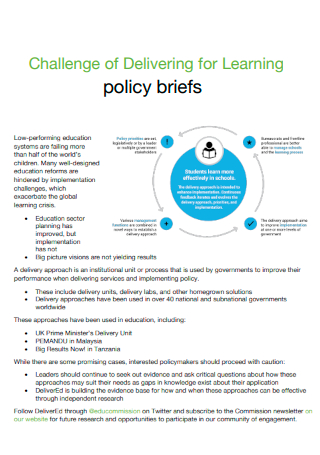
Challenge of Delivering for Learning Policy Brief
download now -
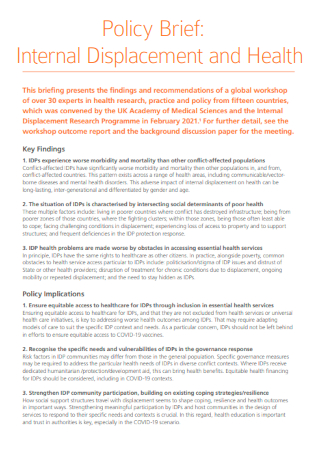
Policy Brief Internal Displacement and Health
download now -
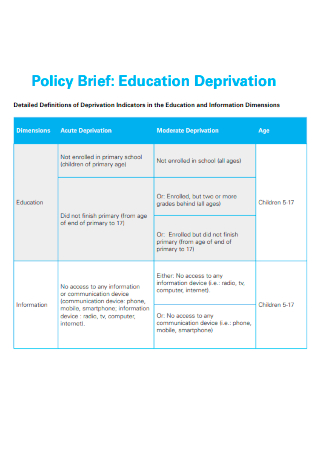
Policy Brief Education Deprivation
download now -
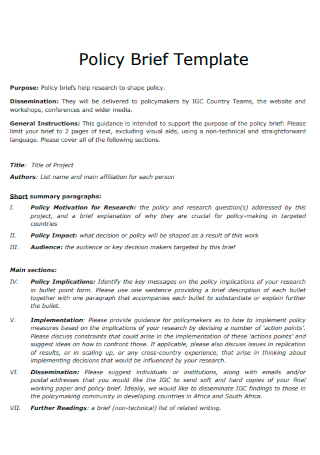
Printable Policy Brief
download now -
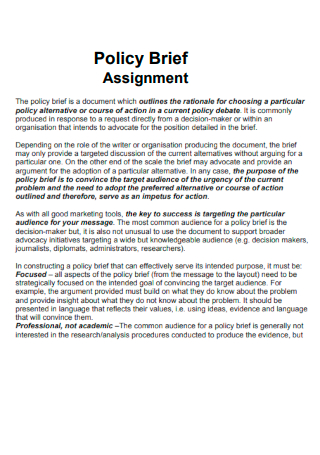
Policy Brief Assignment
download now -
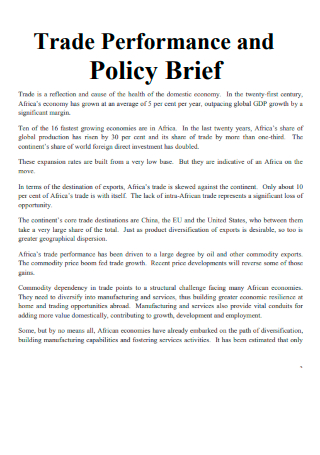
Trade Performance and Policy Brief
download now -
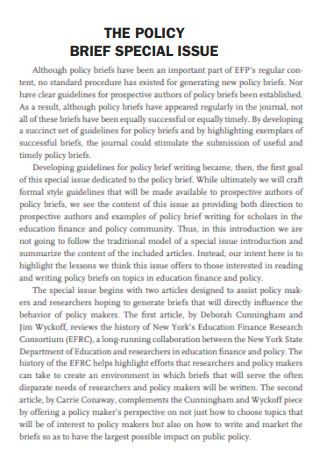
Policy Brief Special Issue
download now -
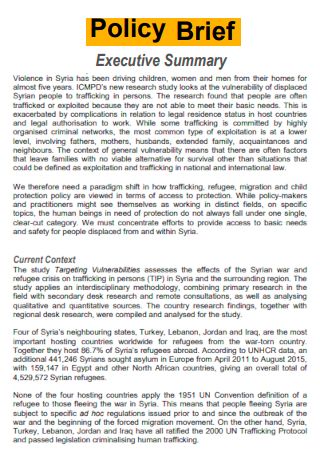
Policy Brief Executive Summary
download now -
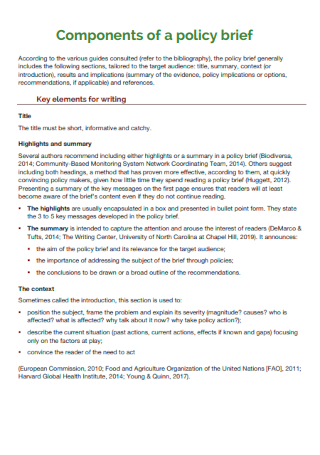
Components of a Policy Brief
download now
What Is a Policy Brief?
A policy brief is a concise and neutral summary of what is currently known or recognized regarding a particular topic or issue. A policy brief is a report to help individuals in policymaking. The principal purpose of the document is to evaluate policy options for a specific issue that is directed toward a specific policy-maker audience. Policymakers must deliver practical decisions under time constraints. As such, the policy brief must provide sufficient evidence and actionable recommendations. The policy brief or the issue brief filters a large amount of complex information for the audience to understand the core of the issue, its background, the involved stakeholders, and any recommendations or hypotheses about the future of the specific issue or problem. A policy brief can also incorporate simple tables or graphs. It also contains a short reference list to inform readers about the different sources of information in the brief and where to look to acquire more information. In many cases, the policy brief contains another brief document in the form of an executive summary that allows audiences to have a grasp of the main issue and essence of the report. To summarize, a policy brief is a document that convinces a target audience of the urgency of the problem at hand. It instructs the organization to adopt an alternative or a course of action, serving as a call for action.
By setting helpful policies in the workplace, employees can increase their productivity. According to the American Psychological Association, about 89 percent of employees that support well-being policies and initiatives are more likely to recommend their company as a good place to work.
Components of a Policy Brief
Policy briefs contain essential information about specific issues that affect an organization. As such, the summary of information in the document must be complete, consistent, and accurate. The individual must ensure that the policy brief incorporates all the vital elements that the reader needs to understand its content. The section below details the key components of a policy brief, together with explanations and descriptions, helping audiences understand each section of the document.
Steps In Writing a Comprehensive Policy Brief
To ensure that audiences can understand the policy brief and its contents, the person responsible for writing the document must guarantee that all the necessary information is available. The section below covers the helpful steps to create the policy brief in a professional and polished manner to help writers deliver every detail in a concise, simple, and attractive manner.
Step 1: Understand the Audience of the Brief
Make sure to tailor the policy brief according to the audience reading the document. Before starting with writing the brief understand the readers. The more that you know about the audience reading the document, make sure to make the adjustments to suit them. In the beginning, you might now have familiarity with the readers, so take the time to perform ample research on them, and determine their attention span and preferences. There will always be a trial and error stage at the beginning of writing the brief. After that, you can tailor the document better.
Step 2: Explain the Urgency of Addressing the Issue
When you are describing the problem to readers, indicate several sentences that discuss the urgency of the situation. It must detail why audiences must pay attention to the problem at present. It must also highlight the possible consequences and risks of inaction on the issue. Policymakers have many and varying issues to address so make sure to state the reason in a concise, simple, and urgent manner that now is the time to provide action on the problem. Backing up the claims with strong facts is essential.
Step 3: Provide Background Information and Supporting Statistics on the Issue
Audiences of the report do not necessarily have all the background information on a particular issue. As such, construct a summary that provides context about the problem, guaranteeing that the person reading the brief has an understanding of the history and the scope of the origins of the issue. You can also utilize an appendix page to provide additional information to avoid disrupting the flow of context in the entire document. Making sure to back up the argument you present with statistical data is vital. Choose statistical information that weighs a lot on the issue and make use of visual representations to make it easier to understand. Incorporate data that is valuable and relevant to the problem, and support the recommendations you make to address the issue.
Step 4: Focus on the Main Issue
Make sure to focus on the principal problem and become more succinct and focused in briefing the audience. In doing so, it has better chances of being read. Circle in on the main issue and the message that you want to convey to readers. For the policy brief to become effective in communicating the issue to the audience, quickly get to the point and make the content easily understandable. Come up with three or four main points for the principal message points for the brief.
Step 5: Avoid Using Jargon that can Cause Confusion In Audiences
Transmit the message to the audience most simply and easily to understand. Consider how you will use the terms in the brief and how the receiving audience outside of the industry. Throwing around jargon that audiences are unfamiliar with causes confusion in readers, muddles the intended message, and makes it difficult to create a positive connection with the readers. Whenever possible, ask for advice from individuals outside your field or industry to give the document a quick read, indicating words that are unfamiliar or difficult to understand that require simplification or explanation.
Step 6: Incorporate Visual Elements Like Charts, Tables, and Graphs
Incorporating eye-catching and attractive visuals to explain a point and back information appealingly. Make sure that the incorporated visual elements align with the message you want to convey. If the entire document is short on space to incorporate a timetable or a bar graph into the page, describe the chart in a sentence or two, then reference it to a webpage where they can view the visual.
FAQs
How many pages does a policy brief need to be?
In most cases, policy briefs must only be two to three pages long.
What is a policy brief in public health?
According to the Centers for Disease Control and Prevention, a policy brief builds on an issue through a summary of evidence-based practices or policies for public health problems.
How do you write a brief?
When writing a brief, the first thing to do is to explain objectives and motivations to the readers. The next step is to highlight the principal objective and the issues the brief covers. After that, describe the target audience, examine competitors, and ask for necessary feedback.
The principal purpose of writing a brief is to communicate objectives and issues with the target audience. When writing a policy brief, guarantee that all the essential elements that help readers understand the problem at hand are in the document. Make sure to incorporate substantial and factual information through thorough research and analysis. Construct a policy brief by familiarizing yourself and using a policy brief template. Download yours today by browsing through the available document in the article, only from Sample.net.
